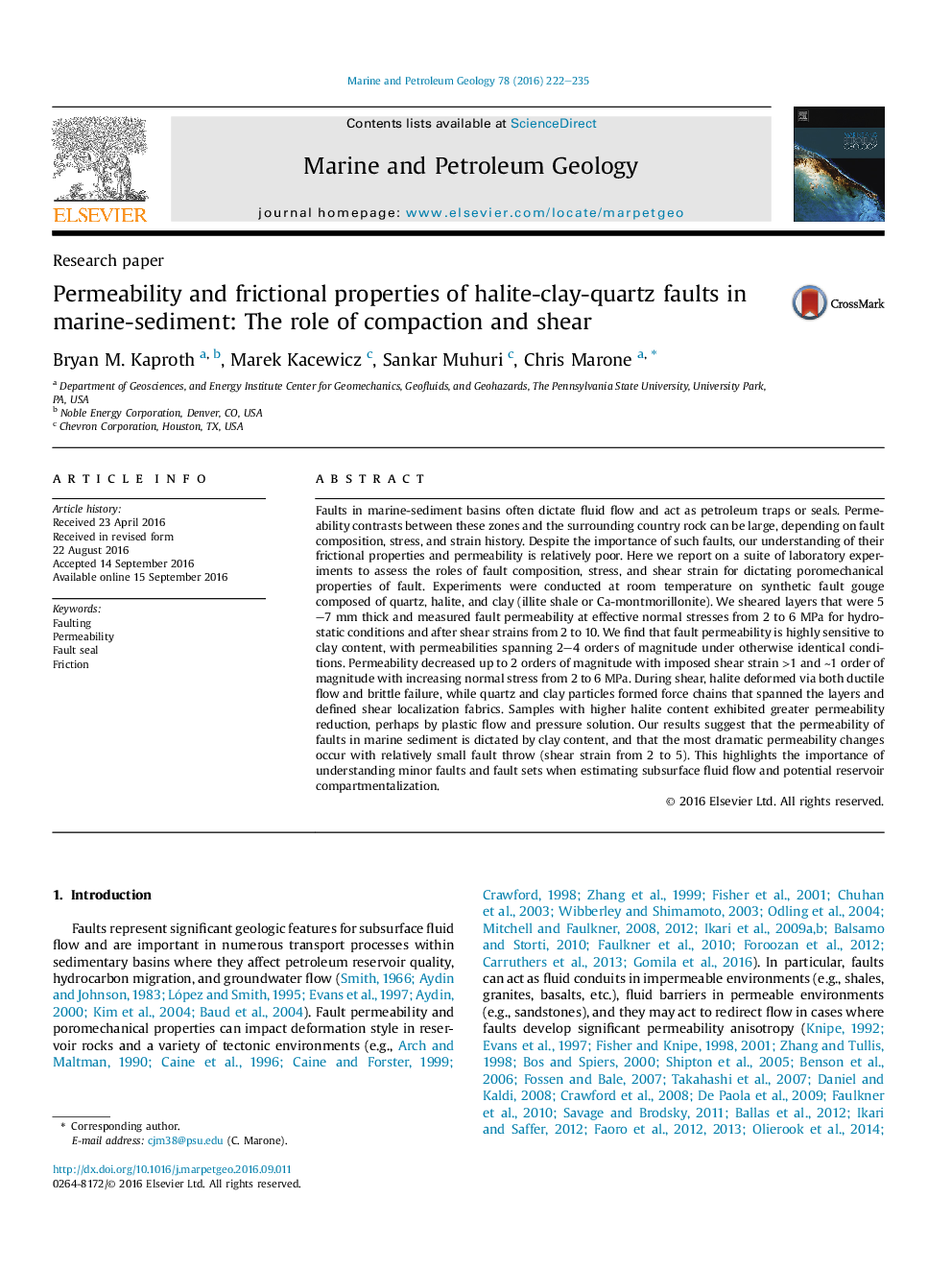| کد مقاله | کد نشریه | سال انتشار | مقاله انگلیسی | نسخه تمام متن |
|---|---|---|---|---|
| 6434382 | 1637149 | 2016 | 14 صفحه PDF | دانلود رایگان |
- Lab experiments document fault properties for halite-clay-quartz rocks.
- Fault permeability is highly sensitive to clay content.
- Fault permeability changes can be large for small fault throw (shear strain <5).
Faults in marine-sediment basins often dictate fluid flow and act as petroleum traps or seals. Permeability contrasts between these zones and the surrounding country rock can be large, depending on fault composition, stress, and strain history. Despite the importance of such faults, our understanding of their frictional properties and permeability is relatively poor. Here we report on a suite of laboratory experiments to assess the roles of fault composition, stress, and shear strain for dictating poromechanical properties of fault. Experiments were conducted at room temperature on synthetic fault gouge composed of quartz, halite, and clay (illite shale or Ca-montmorillonite). We sheared layers that were 5-7Â mm thick and measured fault permeability at effective normal stresses from 2 to 6Â MPa for hydrostatic conditions and after shear strains from 2 to 10. We find that fault permeability is highly sensitive to clay content, with permeabilities spanning 2-4 orders of magnitude under otherwise identical conditions. Permeability decreased up to 2 orders of magnitude with imposed shear strain >1 and â¼1 order of magnitude with increasing normal stress from 2 to 6Â MPa. During shear, halite deformed via both ductile flow and brittle failure, while quartz and clay particles formed force chains that spanned the layers and defined shear localization fabrics. Samples with higher halite content exhibited greater permeability reduction, perhaps by plastic flow and pressure solution. Our results suggest that the permeability of faults in marine sediment is dictated by clay content, and that the most dramatic permeability changes occur with relatively small fault throw (shear strain from 2 to 5). This highlights the importance of understanding minor faults and fault sets when estimating subsurface fluid flow and potential reservoir compartmentalization.
Journal: Marine and Petroleum Geology - Volume 78, December 2016, Pages 222-235
